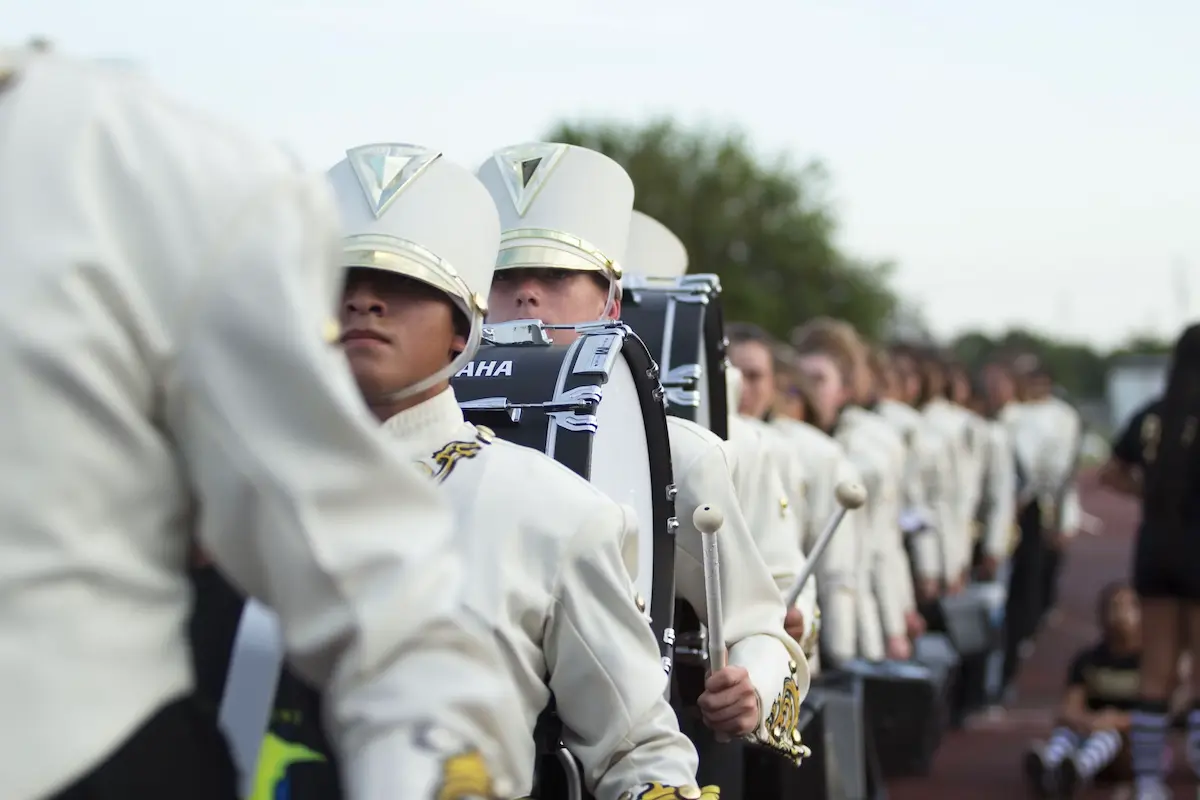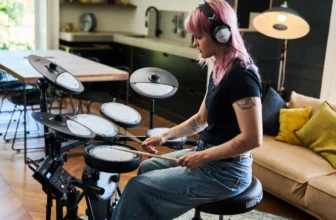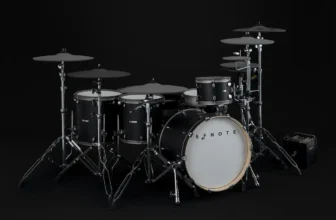

Being on a drumline is not easy – from long rehearsal hours to the perils of a clean double stroke roll, whether you’re on a high school drumline or in a professional drum corps, you can probably attest to the fact that this activity is often a lot harder than it looks.
But for most drummers, the worst part of drumline practice is often the drums themselves. With marching drums weighing up to 40 pounds, the act of wearing drums during a rehearsal can often put excessive strain on a person’s back and shoulders. This strain often leads to back issues, and in some cases, scoliosis.
Unfortunately, drummers suffering from scoliosis are often met with medical advice along the lines of “just stop drumming”– advice that drummers are not likely to appreciate and even less likely to heed. A lot can be done about back issues within the drumming world. Drumline isn’t ever going to be easy – that’s why we love it – but it shouldn’t have to be this hard.
What is Scoliosis?
Scoliosis is defined as abnormal lateral curvature of the spine. Symptoms can include uneven shoulders, uneven waist, one hip higher than the other, or one side of the rib cage jutting forward. Information from the Mayo Clinic explains the various risk factors, including:
- Age: Adolescents and young adults are most liable to show signs of scoliosis.
- Sex: Despite the fact that boys and girls develop mild scoliosis at about the same rate, biological females have a much higher risk of their scoliosis worsening.
- Family history: Scoliosis can sometimes run in families, but most children with scoliosis don’t have a family history.
There are varying degrees of severity when it comes to scoliosis, but possible effects include:
- Difficulty breathing due to a severe spinal curve reducing space in the chest
- Ribs or muscles on one side of the body sticking out due to the spine twisting or rotating
- Increased risk of developing chronic back pain as an adult
- Varying degrees of hip pain due to a misaligned spine
Causes
Scoliosis is almost never directly caused by specific activities, as it is often attributed to genetics, other medical conditions, or family history. However, certain activities (football, carrying heavy backpacks + objects) can worsen scoliosis if it’s already present.
One of these activities is marching on a drumline, as the drums are extremely heavy, and the harnesses can often distribute the weight of the drum in ways that can worsen curvature of the spine.
Scoliosis and Drumming – How Drumming Stresses Your Spine
Anyone who’s ever participated in a drumline can attest to the fact that marching drums are not light by any means. Marching drums can weigh from around 15 to 40 pounds, depending on the type of drum in question. Standard drum harnesses typically feature two bars that curve over the shoulders and are connected by a pad over the player’s stomach area. This tends to put the weight almost entirely on the player’s shoulders and lower back.
Drumline and marching band rehearsals are often long and intense, and drummers will often begin to feel pain from carrying their drums when rehearsing for extended periods of time. High school marching bands will often have 3-4 hours of rehearsal daily, but professional drum corps will often have ten to twelve hours of rehearsal daily for months in a row. Risk of injury is significantly higher for members of a drum corps. However, all forms of drumline typically involve long rehearsal hours and many days back- to-back.
How That Stress Can Lead to Injury
Scoliosis and other spinal cord issues are known to develop during puberty, since that is the time period where children undergo rapid growth spurts and changes in bone structure. As the National Institute of Health explains, “during a pubertal growth spurt, as a rule of thumb, scoliosis will worsen substantially.” A person’s spine is only fully developed at 25 years.
This means that a person’s spine is most vulnerable in their teenage and young adult years: smack-dab in the middle of most peoples’ marching careers! Most drummers participate in a drumline in high school (ages 14-18) and some even go on to do professional drum corps in their early twenties. Since this is the time where the spinal cord is most sensitive, most adolescents and young adults participating in a drumline are at a much higher risk of spinal injuries in general.
How Drumming Can Indirectly Cause Scoliosis
As mentioned earlier, scoliosis can’t be caused directly by carrying heavy objects. However, certain activities (in this case, drumline) can cause other conditions that may later lead to scoliosis in an adolescent.
The main injuries that could result from carrying drums are spine misalignment, back muscle strain, or ligament sprain. All of these can potentially be very painful, and some, such as misalignment of the spine, could lead to scoliosis.
The Small Bones Chiropractic and Wellness Center explains how scoliosis can start from a “small bend caused by a simple misalignment of single vertebrae”. This small bend or misalignment could easily come from stress due to marching drums, and it could later develop into scoliosis or other back issues.
What Should You Do?
At this point in the article, you’re probably a bit concerned about your own spinal health, but you have no intention to simply stop drumming. Good! Thankfully, “just stop drumming” isn’t the only solution – all you have to do is remain aware of your body and the stresses you’re putting on it.
Talk To a Medical Professional
If you’ve been experiencing excessive spinal pain, the first thing you should do is see a medical professional. If they suggest that you stop drumming, talk to your doctor about alternatives instead. In the case that your doctor is not familiar with alternative treatment routes, consider asking for a referral to a sports medicine specialist or a physical therapist. Keep in mind that if you do have a very severe medical issue, you should always listen to your doctor. None of us want to “just stop drumming”, but if that’s the best choice for your medical health, that may be a choice you need to make.
Stretch, Stretch, Stretch!
Whether you have back issues or not, you should never forget to stretch before and after a long rehearsal – it can help prevent spinal issues and keep existing issues from getting worse. You might not feel the effects right away, but stretching is more of a long-term investment – ten years from now you’ll be less likely to suffer chronic back pain. Try doing group stretch sessions with the whole drumline: it’ll benefit everybody!
Ask About a Brace
If you’ve been diagnosed with scoliosis, one of the most common treatment methods is a brace. Talk to your doctor about getting a brace to help straighten your spine. Different kinds of braces are used for different amounts of time and in different ways. Exploring the idea of a brace may be a way for you to keep drumming and manage your scoliosis.
Conditioning
If you’re on a drumline, conditioning is vital to your success. Even if you don’t have a serious back issue, you probably experience some degree of pain or soreness from carrying your drum – conditioning can help reduce that. Simple back, shoulder, and core exercises will be best to help you manage the weight of your drum. If you don’t have access to a gym, that’s not an excuse! Try some pushups, sit-ups, and pull-ups. Not only will conditioning help your back pain; it will also help your playing. As your stamina and strength increase, you won’t be as distracted by your pain and fatigue, so you’ll be able to focus more energy on playing some clean beats!
At the end of the day, drumline is a high-stress activity in many ways. The best thing you can do is pay attention to and properly care for your body. Follow the advice of medical professionals and do what you know is good for your body. Drumming isn’t easy – that’s why we love it – but it’s essential that you proactively work to reduce risk of serious injury.




